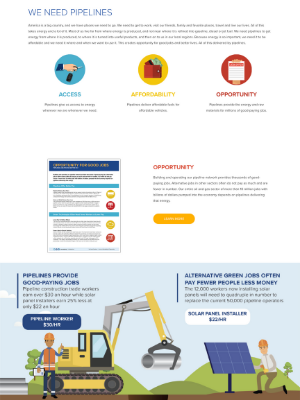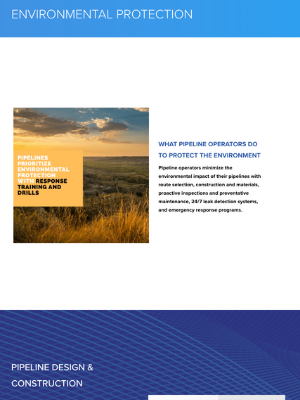#Pipelines are the cleanest and safest way to deliver energy.
#Pipelines emit fewer greenhouse gas emissions than other ways to move liquid energy.
#Pipelines protect the environment because they emit lower GHG emissions than other ways to deliver energy.
Liquids #pipelines are powered primarily by electric pumps with almost no greenhouse gas emissions of their own.
Canceling a pipeline actually results in more GHG emissions because that energy ends up delivered on trains or trucks.
We need to deliver energy from where it is produced to where it is turned into useful products and then on to us in our local regions. #Pipelines are the cleanest and safest way to deliver that energy.
The Obama administration found a #pipeline emits 42% less greenhouse gases than transporting the same amount of energy by rail.
Rejecting a major #pipeline and shipping the same energy by rail increases greenhouse gas emissions by 1.2 million metric tons of CO2 equivalent per year.
The Obama administration found a #pipeline has 0.1% of the incidents and 62% fewer barrels released compared to shipping by rail.
Rejecting a major #pipeline and shipping the same energy by rail increases the risk of oil release by over 800 times and barrels released by 2.6 times.
#Pipelines cause fewer incidents and release less of their product into the environment than their main transportation alternative.
Government review of the #KeystoneXL pipeline found the probability of an incident was 800 times greater by rail than #pipeline.
#Pipelines can travel a shorter, more direct route, while train deliveries must follow existing rail lines that can result in longer trips.
Over 13 trains each a mile long with 100 rail cars are needed to carry the same energy delivered by a large #pipeline on a single day.
Over 4,000 trucks are needed to carry the same energy delivered by a large #pipeline on a single day.
While #pipelines deliver the energy you need underground and out of the way, trucks and trains mean more neighborhood congestion to deliver the same amount of energy.
#Pipelines support global climate action in foreign countries by helping to replace their dirtier burning coal and charcoal with cleaner-burning American liquified gas.
#Pipelines improve the global climate by delivering American produced liquified gas to ports for international shipment to countries that want to replace dirtier fuel sources














